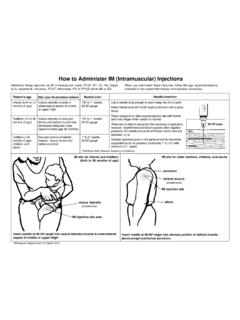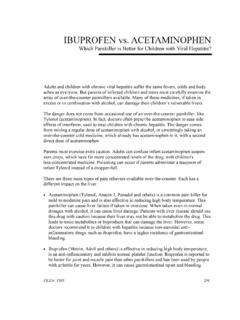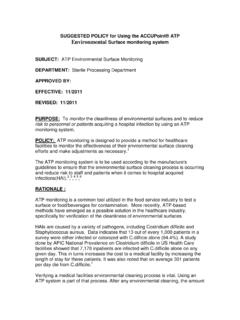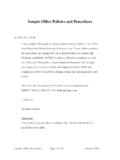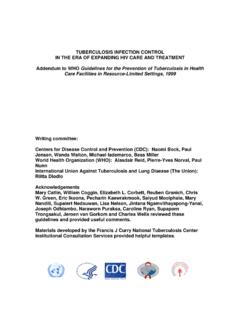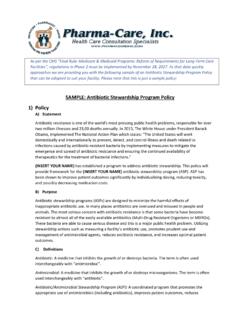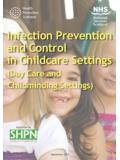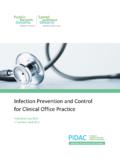Transcription of SAMPLE POLICY SAMPLE POLICIES - PKIDs | home
1 PKIDs PHR 1 SAMPLE POLICY SAMPLE POLICIES Someone At School Has AIDS General School Health Updated 2006 (This statement offers school districts an excellent model POLICY for protecting the health and privacy of all students, no matter what their infectious disease status. This document addresses HIV, but could easily be adapted to include hepatitis B and C.) With support from CDC's Division of Adolescent and School Health and many collaborating partners, NASBE (National Association of State Boards of Education) has developed SAMPLE POLICIES on various school health topics that states, districts, and schools can adopt or adapt for themselves.
2 These POLICY suggestions are written as statements of best practice that all states, school districts, public schools, and private schools should endeavor to adopt. The points they address were suggested by the CDC's scientifically rigorous school health guidelines ( Youth/ ), actual state and local POLICIES , and comments reflecting the expert opinions of many reviewers. Someone at School has AIDS A Complete Guide to Education POLICIES Concerning HIV Infection Updated 2001 Every state and school district needs POLICIES that address serious issues raised by HIV infection. Sound POLICIES provide essential guidance to educators; reassurance to families, students, and school staff members; legal protection for schools; and support for people with the virus.
3 Well drafted and administered, they can also help to prevent or contain controversy. Various laws establish parameters for POLICY options concerning HIV infection, notably the Americans with Disabilities Act and the Individuals with Disabilities Education Act. The POLICY development process should involve medical and legal experts and those affected by the POLICY , and welcome diverse points of view from the community. Locally developed procedures should accompany general statements of POLICY . Education leaders need to actively communicate and engage in dialogue with the community about HIV-related school POLICIES and procedures.
4 Educators ought to work PKIDs PHR 2 SAMPLE POLICY with their local health department to educate the public about medical and legal issues concerning HIV infection. Finally, policymakers and educators should be aware that even if a state, school district, school or early childhood center has previously established POLICIES regarding HIV infection, the challenge is not over. POLICIES adopted just a few years ago might not be adequate to deal with today's issues. New laws, scientific data, and lessons from experience continually emerge. This second edition of Someone at School has AIDS also aims to help those who are revising existing POLICIES .
5 The following SAMPLE POLICY contains the essential areas of education POLICY concerning HIV infection that are covered in the guide. SAMPLE HIV/AIDS POLICY Preamble State/District/School shall strive to protect the safety and health of children and youth in our care, as well as their families, our employees, and the general public. Staff members shall cooperate with public health authorities to promote these goals. The evidence is overwhelming that the risk of transmitting human immunodeficiency virus (HIV) is extremely low in school settings when current guidelines are followed. The presence of a person living with HIV infection or diagnosed with acquired immuno-deficiency syndrome (AIDS) poses no significant risk to others in school, day care, or school athletic settings.
6 1. School Attendance A student with HIV infection has the same right to attend school and receive services as any other student, and will be subject to the same rules and POLICIES . HIV infection shall not factor into decisions concerning class assignments, privileges, or participation in any school-sponsored activity. School authorities will determine the educational placement of a student known to be infected with HIV on a case-by-case basis by following established POLICIES and procedures for students with chronic health problems or students with disabilities. Decision makers must consult with the student's physician and parent or guardian; respect the student's and family's privacy rights; and reassess the placement if there is a change in the student's need for accommodations or services.
7 PKIDs PHR 3 SAMPLE POLICY School staff members will always strive to maintain a respectful school climate and not allow physical or verbal harassment of any individual or group by another individual or group. This includes taunts directed against a person living with HIV infection, a person perceived as having HIV infection, or a person associated with someone with HIV infection. 2. Employment The State/District/School does not discriminate on the basis of HIV infection or association with another person with HIV infection. In accordance with the Americans with Disabilities Act of 1990, an employee with HIV infection is welcome to continue working as long as he or she is able to perform the essential functions of the position, with reasonable accommodation if necessary.
8 3. Privacy Pupils or staff members are not required to disclose HIV infection status to anyone in the education system. HIV antibody testing is not required for any purpose. Every employee has a duty to treat as highly confidential any knowledge or speculation concerning the HIV status of a student or other staff member. Violation of medical privacy is cause for disciplinary action, criminal prosecution, and/or personal liability for a civil suit. No information regarding a person's HIV status will be divulged to any individual or organization without a court order or the informed, written, signed, and dated consent of the person with HIV infection (or the parent or guardian of a legal minor).
9 The written consent must specify the name of the recipient of the information and the purpose for disclosure. All health records, notes, and other documents that reference a person's HIV status will be kept under lock and key. Access to these confidential records is limited to those named in written permission from the person (or parent or guardian) and to emergency medical personnel. Information regarding HIV status will not be added to a student's permanent educational or health record without written consent. 4. Infection Control All employees are required to consistently follow infection control guidelines in all settings and at all times, including playgrounds and school buses.
10 Schools will operate PKIDs PHR 4 SAMPLE POLICY according to the standards promulgated by the Occupational Health and Safety Administration for the prevention of blood-borne infections . Equipment and supplies needed to apply the infection control guidelines will be maintained and kept reasonably accessible. Designate shall implement the precautions and investigate, correct, and report on instances of lapse. A school staff member is expected to alert the person responsible for health and safety issues if a student's health condition or behavior presents a reasonable risk of transmitting an infection.

